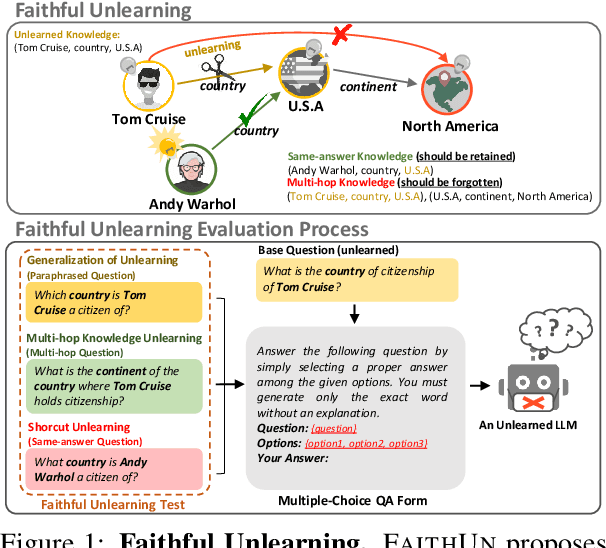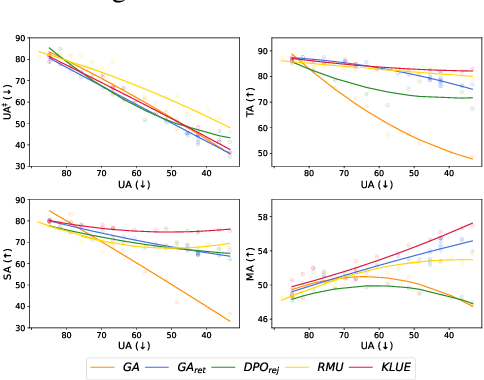Seunghyun Yoon
A Survey on Long-Video Storytelling Generation: Architectures, Consistency, and Cinematic Quality
Jul 09, 2025Abstract:Despite the significant progress that has been made in video generative models, existing state-of-the-art methods can only produce videos lasting 5-16 seconds, often labeled "long-form videos". Furthermore, videos exceeding 16 seconds struggle to maintain consistent character appearances and scene layouts throughout the narrative. In particular, multi-subject long videos still fail to preserve character consistency and motion coherence. While some methods can generate videos up to 150 seconds long, they often suffer from frame redundancy and low temporal diversity. Recent work has attempted to produce long-form videos featuring multiple characters, narrative coherence, and high-fidelity detail. We comprehensively studied 32 papers on video generation to identify key architectural components and training strategies that consistently yield these qualities. We also construct a comprehensive novel taxonomy of existing methods and present comparative tables that categorize papers by their architectural designs and performance characteristics.
FIFA: Unified Faithfulness Evaluation Framework for Text-to-Video and Video-to-Text Generation
Jul 09, 2025



Abstract:Video Multimodal Large Language Models (VideoMLLMs) have achieved remarkable progress in both Video-to-Text and Text-to-Video tasks. However, they often suffer fro hallucinations, generating content that contradicts the visual input. Existing evaluation methods are limited to one task (e.g., V2T) and also fail to assess hallucinations in open-ended, free-form responses. To address this gap, we propose FIFA, a unified FaIthFulness evAluation framework that extracts comprehensive descriptive facts, models their semantic dependencies via a Spatio-Temporal Semantic Dependency Graph, and verifies them using VideoQA models. We further introduce Post-Correction, a tool-based correction framework that revises hallucinated content. Extensive experiments demonstrate that FIFA aligns more closely with human judgment than existing evaluation methods, and that Post-Correction effectively improves factual consistency in both text and video generation.
Context-Informed Grounding Supervision
Jun 18, 2025Abstract:Large language models (LLMs) are often supplemented with external knowledge to provide information not encoded in their parameters or to reduce hallucination. In such cases, we expect the model to generate responses by grounding its response in the provided external context. However, prior work has shown that simply appending context at inference time does not ensure grounded generation. To address this, we propose Context-INformed Grounding Supervision (CINGS), a post-training supervision in which the model is trained with relevant context prepended to the response, while computing the loss only over the response tokens and masking out the context. Our experiments demonstrate that models trained with CINGS exhibit stronger grounding in both textual and visual domains compared to standard instruction-tuned models. In the text domain, CINGS outperforms other training methods across 11 information-seeking datasets and is complementary to inference-time grounding techniques. In the vision-language domain, replacing a vision-language model's LLM backbone with a CINGS-trained model reduces hallucinations across four benchmarks and maintains factual consistency throughout the generated response. This improved grounding comes without degradation in general downstream performance. Finally, we analyze the mechanism underlying the enhanced grounding in CINGS and find that it induces a shift in the model's prior knowledge and behavior, implicitly encouraging greater reliance on the external context.
MS4UI: A Dataset for Multi-modal Summarization of User Interface Instructional Videos
Jun 14, 2025Abstract:We study multi-modal summarization for instructional videos, whose goal is to provide users an efficient way to learn skills in the form of text instructions and key video frames. We observe that existing benchmarks focus on generic semantic-level video summarization, and are not suitable for providing step-by-step executable instructions and illustrations, both of which are crucial for instructional videos. We propose a novel benchmark for user interface (UI) instructional video summarization to fill the gap. We collect a dataset of 2,413 UI instructional videos, which spans over 167 hours. These videos are manually annotated for video segmentation, text summarization, and video summarization, which enable the comprehensive evaluations for concise and executable video summarization. We conduct extensive experiments on our collected MS4UI dataset, which suggest that state-of-the-art multi-modal summarization methods struggle on UI video summarization, and highlight the importance of new methods for UI instructional video summarization.
Learning to Clarify by Reinforcement Learning Through Reward-Weighted Fine-Tuning
Jun 08, 2025Abstract:Question answering (QA) agents automatically answer questions posed in natural language. In this work, we learn to ask clarifying questions in QA agents. The key idea in our method is to simulate conversations that contain clarifying questions and learn from them using reinforcement learning (RL). To make RL practical, we propose and analyze offline RL objectives that can be viewed as reward-weighted supervised fine-tuning (SFT) and easily optimized in large language models. Our work stands in a stark contrast to recently proposed methods, based on SFT and direct preference optimization, which have additional hyper-parameters and do not directly optimize rewards. We compare to these methods empirically and report gains in both optimized rewards and language quality.
Hallucinate at the Last in Long Response Generation: A Case Study on Long Document Summarization
May 21, 2025Abstract:Large Language Models (LLMs) have significantly advanced text generation capabilities, including tasks like summarization, often producing coherent and fluent outputs. However, faithfulness to source material remains a significant challenge due to the generation of hallucinations. While extensive research focuses on detecting and reducing these inaccuracies, less attention has been paid to the positional distribution of hallucination within generated text, particularly in long outputs. In this work, we investigate where hallucinations occur in LLM-based long response generation, using long document summarization as a key case study. Focusing on the challenging setting of long context-aware long response generation, we find a consistent and concerning phenomenon: hallucinations tend to concentrate disproportionately in the latter parts of the generated long response. To understand this bias, we explore potential contributing factors related to the dynamics of attention and decoding over long sequences. Furthermore, we investigate methods to mitigate this positional hallucination, aiming to improve faithfulness specifically in the concluding segments of long outputs.
CORG: Generating Answers from Complex, Interrelated Contexts
Apr 25, 2025Abstract:In a real-world corpus, knowledge frequently recurs across documents but often contains inconsistencies due to ambiguous naming, outdated information, or errors, leading to complex interrelationships between contexts. Previous research has shown that language models struggle with these complexities, typically focusing on single factors in isolation. We classify these relationships into four types: distracting, ambiguous, counterfactual, and duplicated. Our analysis reveals that no single approach effectively addresses all these interrelationships simultaneously. Therefore, we introduce Context Organizer (CORG), a framework that organizes multiple contexts into independently processed groups. This design allows the model to efficiently find all relevant answers while ensuring disambiguation. CORG consists of three key components: a graph constructor, a reranker, and an aggregator. Our results demonstrate that CORG balances performance and efficiency effectively, outperforming existing grouping methods and achieving comparable results to more computationally intensive, single-context approaches.
Hypothetical Documents or Knowledge Leakage? Rethinking LLM-based Query Expansion
Apr 19, 2025



Abstract:Query expansion methods powered by large language models (LLMs) have demonstrated effectiveness in zero-shot retrieval tasks. These methods assume that LLMs can generate hypothetical documents that, when incorporated into a query vector, enhance the retrieval of real evidence. However, we challenge this assumption by investigating whether knowledge leakage in benchmarks contributes to the observed performance gains. Using fact verification as a testbed, we analyzed whether the generated documents contained information entailed by ground truth evidence and assessed their impact on performance. Our findings indicate that performance improvements occurred consistently only for claims whose generated documents included sentences entailed by ground truth evidence. This suggests that knowledge leakage may be present in these benchmarks, inflating the perceived performance of LLM-based query expansion methods, particularly in real-world scenarios that require retrieving niche or novel knowledge.
FaithUn: Toward Faithful Forgetting in Language Models by Investigating the Interconnectedness of Knowledge
Feb 26, 2025



Abstract:Various studies have attempted to remove sensitive or private knowledge from a language model to prevent its unauthorized exposure. However, prior studies have overlooked the complex and interconnected nature of knowledge, where related knowledge must be carefully examined. Specifically, they have failed to evaluate whether an unlearning method faithfully erases interconnected knowledge that should be removed, retaining knowledge that appears relevant but exists in a completely different context. To resolve this problem, we first define a new concept called superficial unlearning, which refers to the phenomenon where an unlearning method either fails to erase the interconnected knowledge it should remove or unintentionally erases irrelevant knowledge. Based on the definition, we introduce a new benchmark, FaithUn, to analyze and evaluate the faithfulness of unlearning in real-world knowledge QA settings. Furthermore, we propose a novel unlearning method, KLUE, which updates only knowledge-related neurons to achieve faithful unlearning. KLUE identifies knowledge neurons using an explainability method and updates only those neurons using selected unforgotten samples. Experimental results demonstrate that widely-used unlearning methods fail to ensure faithful unlearning, while our method shows significant effectiveness in real-world QA unlearning.
From Selection to Generation: A Survey of LLM-based Active Learning
Feb 17, 2025Abstract:Active Learning (AL) has been a powerful paradigm for improving model efficiency and performance by selecting the most informative data points for labeling and training. In recent active learning frameworks, Large Language Models (LLMs) have been employed not only for selection but also for generating entirely new data instances and providing more cost-effective annotations. Motivated by the increasing importance of high-quality data and efficient model training in the era of LLMs, we present a comprehensive survey on LLM-based Active Learning. We introduce an intuitive taxonomy that categorizes these techniques and discuss the transformative roles LLMs can play in the active learning loop. We further examine the impact of AL on LLM learning paradigms and its applications across various domains. Finally, we identify open challenges and propose future research directions. This survey aims to serve as an up-to-date resource for researchers and practitioners seeking to gain an intuitive understanding of LLM-based AL techniques and deploy them to new applications.
 Add to Chrome
Add to Chrome Add to Firefox
Add to Firefox Add to Edge
Add to Edge